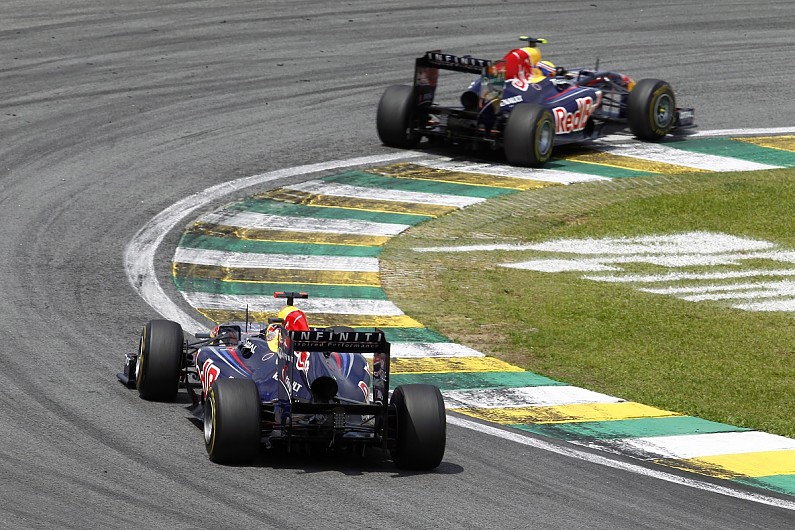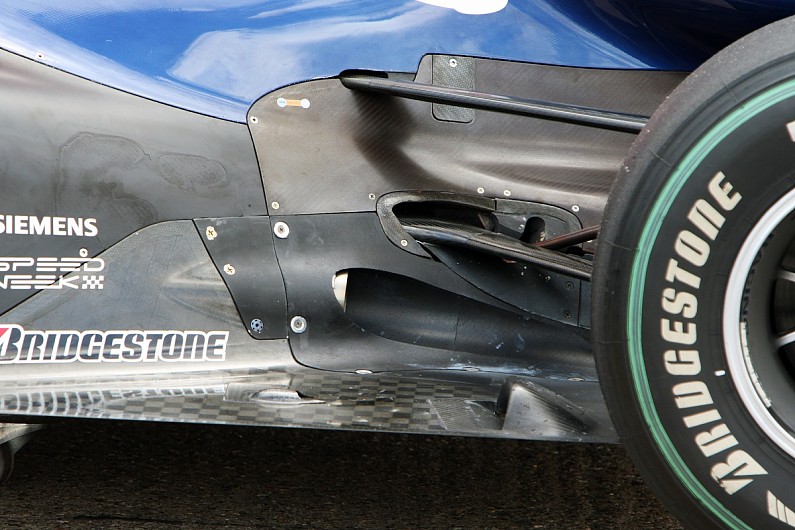In the latest edition of the ‘Banned’ series, Formula 1’s relationship with the exhaust-blown diffuser is explored. Reintroduced by Red Bull at the turn of the 2010s, it began a battle of wits over the next two years which blew hot and cold throughout…
The search for performance in Formula 1 requires a little bit of genius, some lateral thinking and sometimes a willingness to push the boundaries of the regulations.
On occasion, common design features in old cars can make a return as regulations and trends change.
An example of this is the blown diffuser, which had a huge impact in F1 as the V8 era came to an end, having been used during the 1980’s and ’90’s before falling out of favour as the regulations changed.
Those original interpretations featured the tailpipe exits within the diffuser, which put a greater onus on the drivers – whose throttle inputs essentially controlled the amount of downforce available as the exhaust gases enhanced the low-pressure region below the floor.
This meant that many drivers had to try to adapt their driving style to suit – sometimes counterintuitively getting on and off the power accordingly depending on the scenario.
The 2010 Red Bull RB6 designed by Adrian Newey not only featured a double diffuser, a feature that had dominated the development landscape for all of the teams in 2009, but it would also reprise the role exhausts could play in creating downforce at the rear of the car.
Red Bull’s interpretation had the exhaust tailpipes moved down toward the floor, blowing the diffuser from above. Here, the exhausts could create a jet of airflow which rolled around the end-fences of the diffuser to keep it sealed.
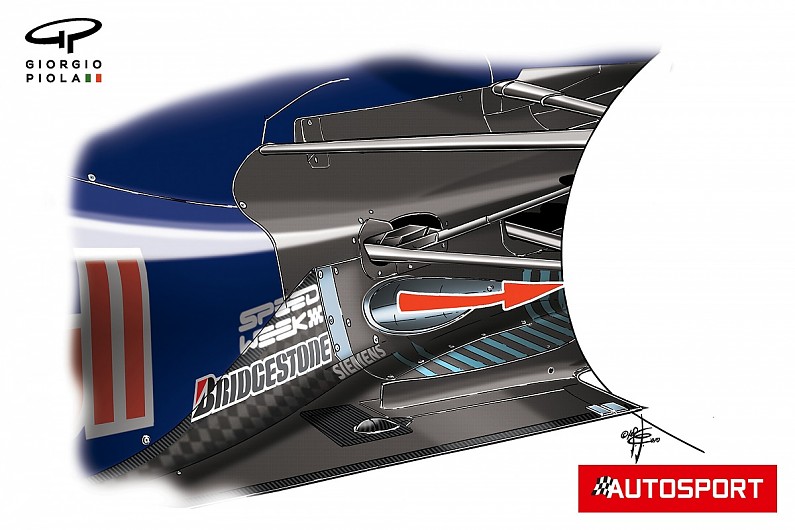
The team even attempted to disguise its intentions when it first tested the solution; knowing others would be quick to see its potential, Red Bull placed stickers of an exhaust outlet on the bodywork in the old position.
Other teams began to roll out their own solutions once they had understood the aerodynamic benefits, placing their exhaust tailpipe in similar positions.
Although Red Bull had a head start over its competitors, the team had also put in a great deal of work with engine supplier, Renault, enabling it to extract even more performance through off-throttle blowing.
“I thought it was a pretty exciting period to be honest, because we had cars in 2011 basically doing the full lap on full throttle, but not full torque – just full throttle!” Paddy Lowe
By clever manipulation of engine maps, Red Bull and Renault were able to ensure that some degree of airflow was still being expelled from the exhaust outlet to retain the seal on the diffuser – even when off-throttle.
With that, the blown diffuser’s main bugbear was eliminated as downforce was still being created during all phases of cornering.
The FIA sought to discourage this practice, moving to change the regulations about the location of the exhaust for 2011.
But this simply inspired F1’s great technical minds to enact a workaround solution – and three different designs immediately emerged to try to counteract the new requirements.
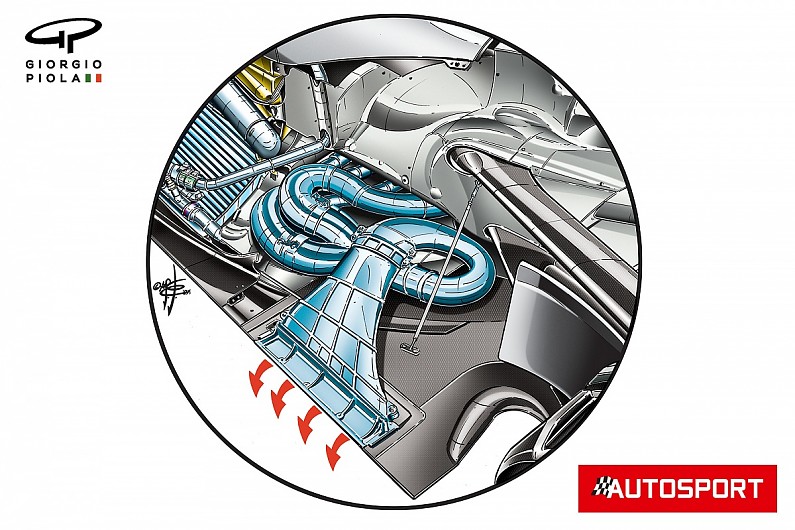
The two most extreme solutions to arrive were from McLaren and Lotus, as they routed the exhaust within the sidepod to try to place the tailpipe in a position where they thought they’d gain the most aerodynamically.
In the case of McLaren (above), the fantail solution had a nozzle that was mated to the floor and blew through a long slot on its edge. It was supposed to act much in the same way as a skirt, creating a seal between the floor and the track.
Not all good ideas work in the real world though, and this one didn’t even make it through testing, as the team struggled with heat management issues and the rigidity of the exhaust against the flexibility of the floor.
McLaren had initially struggled with exhaust-blowing throughout 2010, as the positioning of the outlets meant that the exhaust gases initially clung to the contours of the car, rather than pouring out to the corner of the diffuser.
Meanwhile, Lotus opted to stretch the exhaust outlet all the way to the front of its floor. Its front-facing exhaust solution had shown promise when tested against other designs pursued by the team and also proved less susceptible to changes in throttle, resulting in an initially easier car to drive – but didn’t stand up to the development of other teams and quickly fell down the order.
Meanwhile, Red Bull had come up with a less complex design that was swiftly followed by the rest of the grid. It created wide, low exhausts that sat on top of the floor and exited into the channel between the side of the tyre and the outer diffuser wall.
This solution would help to mitigate a problem known as ‘tyre squirt’, in which jets of air are pushed laterally into the diffuser’s path produced by the tyre’s rotation and flex under load.
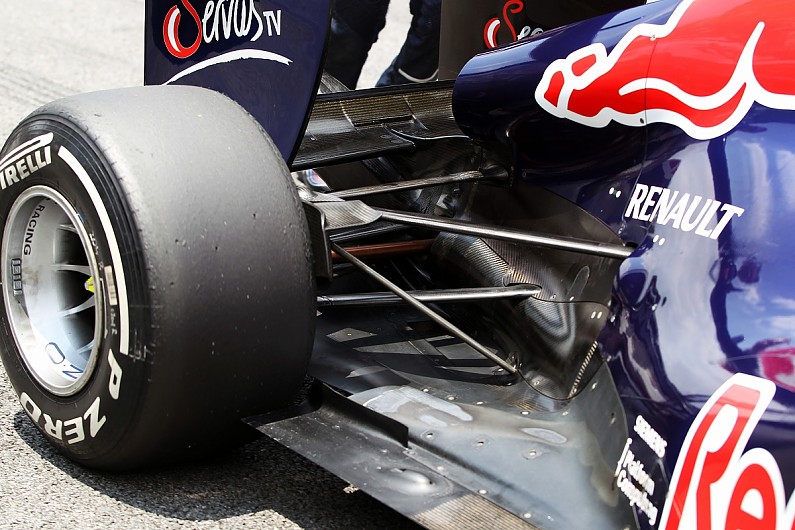
FIA exhausted by diffuser trickery
F1 teams and the FIA were once again set to be at loggerheads over the course of the coming races, with the latter unamused that the engine was technically being driven without command from the driver.
It seems that cold-blowing, as it became known, was considered a borderline but acceptable tactic by the FIA. This exhaust-blowing trick was achieved by cutting the fuel and spark and, combined with cylinder cutting, turned the engine (which was still being revved) into an air pump and was able to power the diffuser when off-throttle.
“For some reason, the FIA considered it to be evil – and I don’t really know why! I don’t know why they were so angry about it” Paddy Lowe
A practice that subsequently entered circulation was hot-blowing. This involved retarding the ignition and manipulating the torque maps in order to get a more potent gas plume to power the aerodynamics.
Hot blowing wasn’t viable over a long period, as it increased fuel consumption and affected the engine’s lifespan. But used sparingly it could offer a tangible performance advantage.
The FIA sought to reign in the practice and was set to introduce an in-season ban. But, following lobbying from the teams, it instead altered the regulations to not only prevent off throttle blowing, but also rule out the floor mounted blown diffuser solutions.
“In 2011 it all reached a hiatus around Silverstone with lots of moaning about engine maps,” recalls then-McLaren technical chief Paddy Lowe.
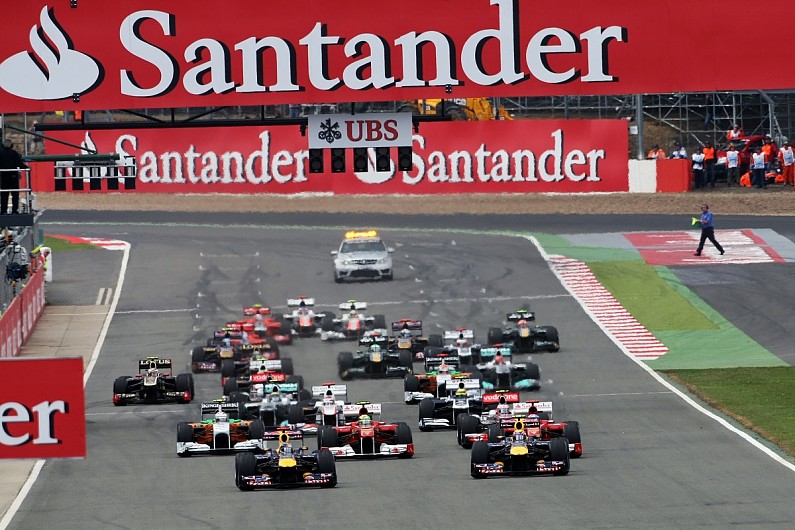
“I thought it was a pretty exciting period to be honest, because we had cars in 2011 basically doing the full lap on full throttle, but not full torque – just full throttle!
“But for some reason, the FIA considered it to be evil – and I don’t really know why! I don’t know why they were so angry about it. It was good fun, and it didn’t really affect the FIA. I didn’t get it to be honest.
“It was probably teams that felt that they weren’t doing as well as others that were lobbying for it to get banned.
“To this day, the FIA considers any sort of excess gas production to be some form of the devil’s work, really.
“So there were quite a few constraints on that part for 2012, with the maps, but I think they’d realised that it was all very difficult with the maps, so the final solution was going to be geometric, or physical in the sense of the tailpipes.”
The FIA attempted to stamp out the practice for 2012 by specifying a box region where the exhaust outlet could be placed. It effectively banned the current crop of exhaust-blown diffusers but, as we’ll find out in the next article in the ‘Banned’ series, this didn’t stop the teams for long…
